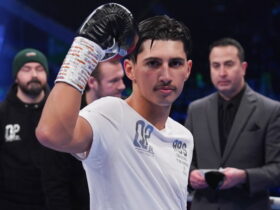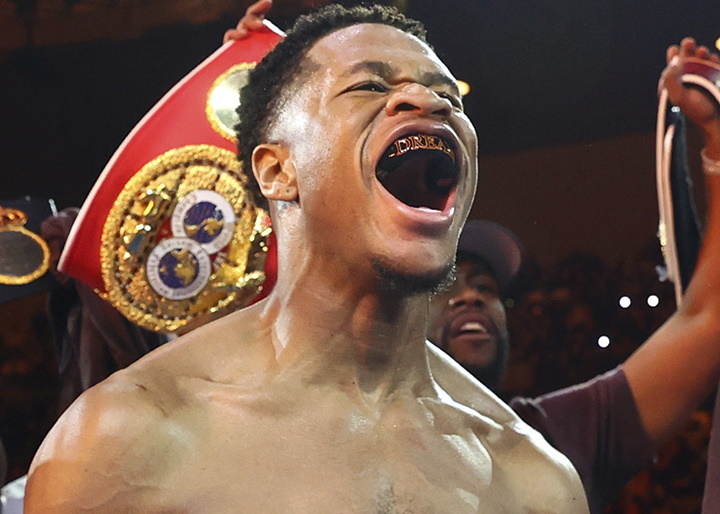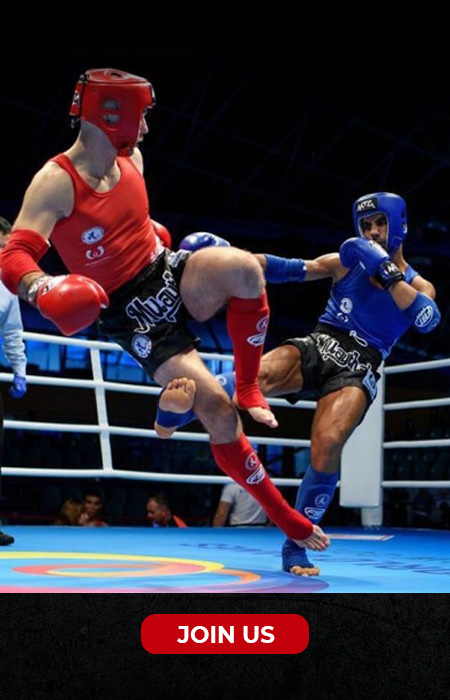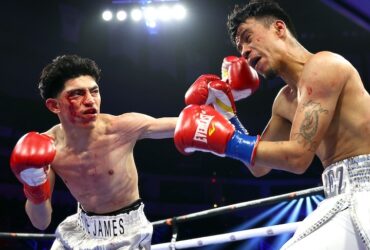The cliche reading ‘now that the dust has settled’ doesn’t seem to apply.
The dust hasn’t settled yet. Days after an outstanding twelve-round battle for the lightweight championship of the world, the man who should be king is still sparking ample back and forth between boxing fans and pundits.
The man who remains king, should’s be damned, is 24-year old Devin Haney. Haney walked away with a unanimous decision against challenger Vasyl Lomachenko at scores of 115-113 twice and a 116-112 score that raised particular ire. A whole lot of folks saw a narrow victory the other way for Lomachenko.
Before digging into those scores, let’s say this about the fight itself: it doesn’t get much better. No, it wasn’t an epic, bloody war but it was a reminder great fights can be more than that. It was a showdown between two supremely skilled and conditioned athletes who fought at a rapid pace with adjustments made back and forth from bell to bell.
It was a classic in the way fights like James Toney-Mike McCallum or Shane Mosley-Oscar De La Hoya I were in another generation. Feints, footwork, defense, and shifts of momentum pair as beautifully with flying leather to create drama when executed with the precision and style we saw Saturday.
This corner doesn’t fall into the controversy camp, having seen Devin Haney the winner at a total of 115-113, or seven rounds to five. The path to that unofficial tally was largely built in the early going, scoring all but one of the first seven rounds for Haney, tallying only round three for Lomachenko in that stretch. Many rounds were close, but Haney’s body work, uppercut, and jab as he often pressed the action looked just a little bit better for most of those frames.
The last five rounds on this card were as firm with Lomachenko, scoring all but the final frame to the challenger. Lomachenko, using his masterful feet as well as his hands, was able to seize the front foot and put Haney on the back foot, touching the champion at mid and short range without letting Haney figure out what was coming next.
The biggest controversy, though it didn’t actually affect the outcome, was the very official scorecard of Dave Moretti. Moretti saw the closest fight of any of the three officials in the first six rounds but somehow saw Haney dominating the second half including an inexplicable scoring of the tenth against Lomachenko.
Lomachenko’s two best rounds appeared to be the tenth and an eleventh where Haney was visibly hurt and in peril.
In cases of fights this close, it’s always fun to wonder what the final scoring would have looked like under a consensus scoring system. Consensus would be a where each round was awarded by way of looking at all three scores and awarding the round as a single score to the person who got the majority of the judges in their favor.
Rounds two, nine (where Haney landed the single best shot of the frame), and twelve were circled on this corner’s unofficial card as possible swing rounds. How does that look against consensus scoring?
If Haney-Lomachenko was scored via consensus, the breakdown would have been:
Round One to Haney (3-0)
Round Two to Lomachenko (3-0)
Round Three to Lomachenko (2-1)
Round Four to Haney (3-0)
Round Five to Haney (3-0)
Round Six to Haney (2-1)
Round Seven to Haney (2-1)
Round Eight to Lomachenko (2-1)
Round Nine to Haney (3-0)
Round Ten to Lomachenko (2-1)
Round Eleven to Lomachenko (3-0)
Round Twelve to Haney (3-0)
Of the five rounds the judges didn’t see unanimously, Morreti was the outlier in the sixth, eighth and tenth. Tim Cheatham was the outlier for rounds three and seven. David Sutherland scored with the majority in all twelve rounds.
For this scorer’s unofficial scorecard, following the consensus outcome would flip two of three circled rounds (two and nine), still ending at the same place as an official consensus outcome would have: 115-113 Haney.
It was that close.
Eventually the dust will settle and fans will move on the next big fight and next ensuing debate. What we will be left with is the memory of twelve rounds of tremendous boxing that hopefully can be more appreciated than the emotion of the moment. Haney-Lomachenko was fantastic stuff that elevated both men and the sport for all of its thirty-six fighting minutes.
Where do we go from here?
Futures: Haney has choices to make. Reportedly now a promotional free agent, staying at lightweight is a high-risk proposition. At 24, his body appears to be telling him to go up. Shakur Stevenson is there as a threat, but that fight might not carry the value yet to keep him dieting. In the ring, Stevenson hasn’t done anything of note yet at lightweight to really have a public mandate as the premiere challenger. Stevenson said he thought Lomachenko deserved the win. If Haney moves up in weight, Stevenson-Lomachenko looks like a natural for both men.
Haney’s accountant might be fine with him staying at the weight if he can defend his crown against Gervonta Davis. Considering the pay-per-numbers Davis just did versus Ryan Garcia, Haney-Davis has superfight potential. Davis has never beaten an opponent as good as Lomachenko. Haney has never been hit by anyone with the thunder Davis carries. It’s an intriguing clash.
If Haney opts to move to Jr. welterweight, Top Rank is promoting the fight in June that might be of most interest. Josh Taylor is defending his lineal Jr. welterweight crown against former lineal lightweight king Teofimo Lopez. Haney versus the winner is probably the biggest fight in that division. If Taylor returns to the form he didn’t have when last seen against Jack Catterall, the chance is there for a clash of undefeated champions. If Lopez resurrects from a rocky patch since his win over Lomachenko, we organically have a showdown between two of the young guns at the heart of the unfolding era between lightweight and welterweight.
It’s hard to go wrong either way.
For Lomachenko, the loss will sting long after anything else he accomplishes. He fought his heart out on Saturday, staying with a bigger, longer, champion ten years his junior. It was a special performance in defeat but for fans who thought they were seeing an heir to the thrones of men like Roy Jones and Floyd Mayweather, it is a bitter pill. Now 17-3 at age 35, Lomachenko will have to ask, as he did in the Lopez loss, whether he could have started his best work a little earlier, if he could have closed the show better, if he left just a little too much on the table.
The line between a fantastic professional and a seat with the immortals can be thin in boxing, as thin as a round or two on a memorable Saturday night.
Cliff’s Notes…
That there isn’t debate about the huge women’s match on Saturday might be as surprising as how good Haney-Lomachenko turned out to be.
Chantelle Cameron went into Ireland to defend the Jr. welterweight crown against undefeated, undisputed lightweight champion Katie Taylor in what was surely meant to be a crowning homecoming for Taylor. Conventional thinking was that if Taylor kept it close, it would be hard to lose a decision. The judges were on their A-game and the rightful winner, Cameron, left with her crown. It was an excellent contest where Cameron’s relentless pressure overcame the experience and skill of Taylor.
For Taylor, the loss is no shame. She was slated for a rematch with featherweight champion Amanda Serrano and, when that fight fell through, took arguably the next toughest foe available for a chance at a second undisputed crown. Taylor fought her heart out and nothing Saturday took away from wanting to see the Serrano rematch.
Cameron was the story though and what a story it is. In consecutive fights, Cameron has defended her place at the table against the undisputed champions of the class directly above (Jessica McCaskill, welterweight) and below her. No one, on the men’s or women’s side relative to the scale, has a better two-fight win streak right now.
The golden age of women’s boxing added another gem to its roster of recent affairs. It was a hell of a show.
Cliff Rold is the Managing Editor of BoxingScene, a founding member of the Transnational Boxing Rankings Board, a member of the International Boxing Research Organization, and a member of the Boxing Writers Association of America. He can be reached at roldboxing@hotmail.com

















Leave a Reply